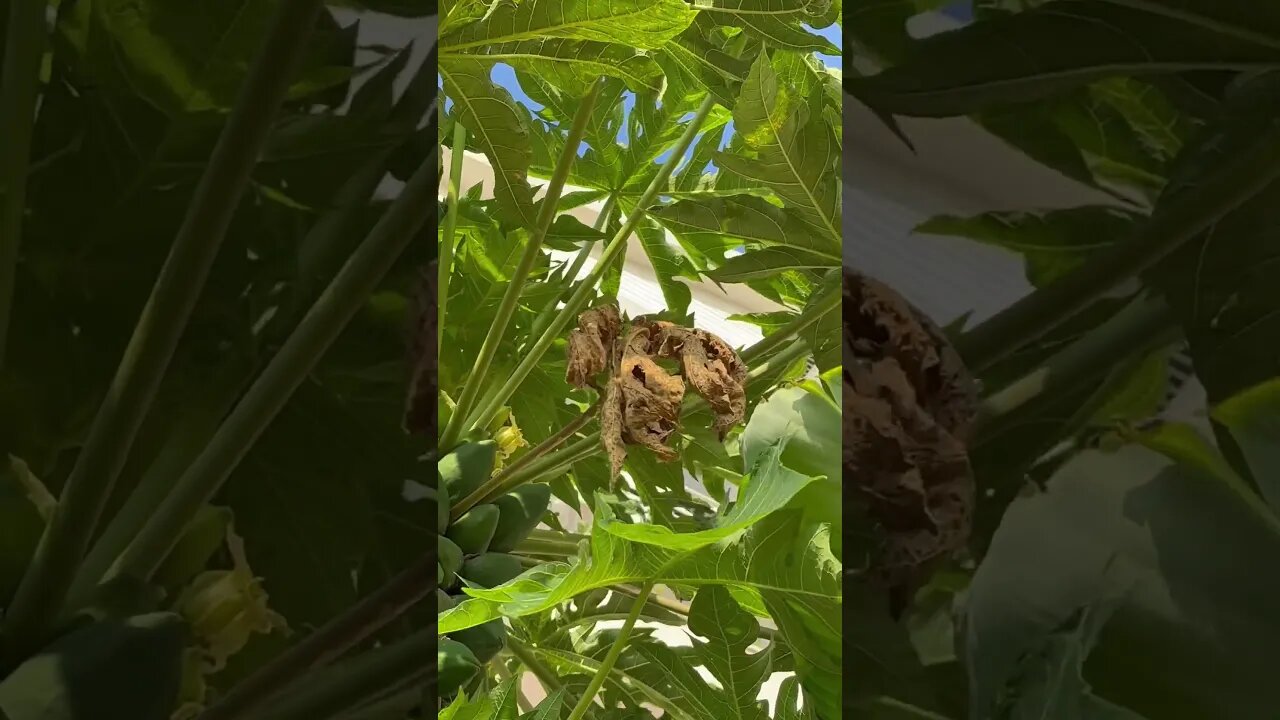Premium Only Content

Everything about Papaya Trees
The papaya tree, scientifically known as Carica papaya, is a tropical plant that's best known for its sweet, melon-like fruit. The tree is native to Central America and northern South America, but it is now grown in many other parts of the world, including parts of Asia, Africa, and the Pacific Islands.
Here are some key features and facts about the papaya tree:
Size and Appearance: Papaya trees are relatively small compared to other tropical trees, usually reaching a height of 5 to 10 meters. They have a straight, unbranched stem with large, lobed leaves at the top. The bark is typically grey or brown. The tree's leaves are large, spanning around 20–28 inches, and grow from the top of the trunk directly.
Flowers and Fruit: Papaya trees produce white or yellowish flowers. There are three sexes: male, female, and hermaphrodite (both sexes in one flower). Most commercially grown papaya are from hermaphrodite trees as they produce the desirable fruit shape and size. The fruit grows directly on the trunk, typically in clusters. Papayas are oval or pear-shaped and can reach up to 20 inches in length. The skin is green when unripe, turning to a golden yellow or orange when ripe. Inside, the fruit has a soft, sweet, orange flesh and contains numerous small, black seeds in the center.
Growth and Care: Papaya trees love warm, tropical climates, and full sun exposure. They require well-drained soil and regular watering. Despite their love for heat, they can be sensitive to extreme temperatures and may not fare well in areas prone to frost. They are fast growers and can start producing fruit as soon as 6 to 9 months after planting.
Uses: The fruit is eaten fresh or used in cooking, often in desserts and salads, but also in some savory dishes. Green (unripe) papaya is also used in some cuisines, especially in South-East Asia, in salads like 'som tam'. The fruit is also used to make juices and jams. The papaya's enzymes are used in meat tenderizers and some cosmetic products. Even the seeds are edible, having a peppery taste and can be used as a substitute for black pepper.
Health Benefits: Papaya is a rich source of antioxidant nutrients such as carotenes, vitamin C, and flavonoids; the B vitamins, folate, and pantothenic acid; minerals like potassium and magnesium; and fiber. It is also known for its digestive benefits due to the presence of the enzyme papain, which can help break down tough protein chains found in muscle meat.
-
 LIVE
LIVE
SpartakusLIVE
4 hours ago#1 Birthday Boy Celebrates with MASSIVE and HUGE 4.8-Hour Stream
353 watching -
 LIVE
LIVE
Man in America
6 hours agoFrom Oil Barons to Pill Pushers: The Rockefeller War on Health w/ Jeff Adam
626 watching -

Barry Cunningham
3 hours agoBREAKING NEWS: PRESIDENT TRUMP THIS INSANITY MUST END NOW!
53.7K99 -
 LIVE
LIVE
StevieTLIVE
2 hours agoWednesday Warzone Solo HYPE #1 Mullet on Rumble
106 watching -
 5:58
5:58
Mrgunsngear
3 hours ago $0.78 earnedBreaking: The New Republican Party Chairman Is Anti 2nd Amendment
4.46K5 -
 LIVE
LIVE
Geeks + Gamers
3 hours agoGeeks+Gamers Play- MARIO KART WORLD
225 watching -
![(8/27/2025) | SG Sits Down Again w/ Sam Anthony of [Your]News: Progress Reports on Securing "We The People" Citizen Journalism](https://1a-1791.com/video/fww1/d1/s8/6/G/L/3/c/GL3cz.0kob.1.jpg) 29:34
29:34
QNewsPatriot
3 hours ago(8/27/2025) | SG Sits Down Again w/ Sam Anthony of [Your]News: Progress Reports on Securing "We The People" Citizen Journalism
6.93K1 -
 25:12
25:12
Jasmin Laine
8 hours agoDanielle Smith’s EPIC Mic Drop Fact Check Leaves Crowd FROZEN—Poilievre FINISHES the Job
13.6K19 -
 11:33:26
11:33:26
ZWOGs
12 hours ago🔴LIVE IN 1440p! - SoT w/ Pudge & SBL, Ranch Sim w/ Maam & MadHouse, Warzone & More - Come Hang Out!
6.94K -
 LIVE
LIVE
This is the Ray Gaming
1 hour agoI'm Coming Home Coming Home Tell The World... | Rumble Premium Creator
37 watching